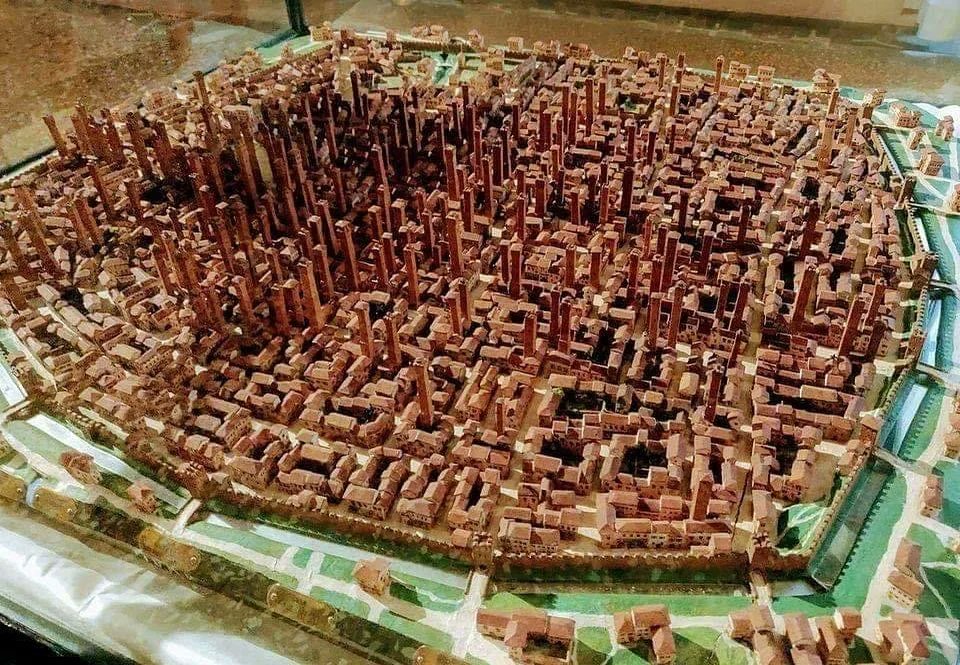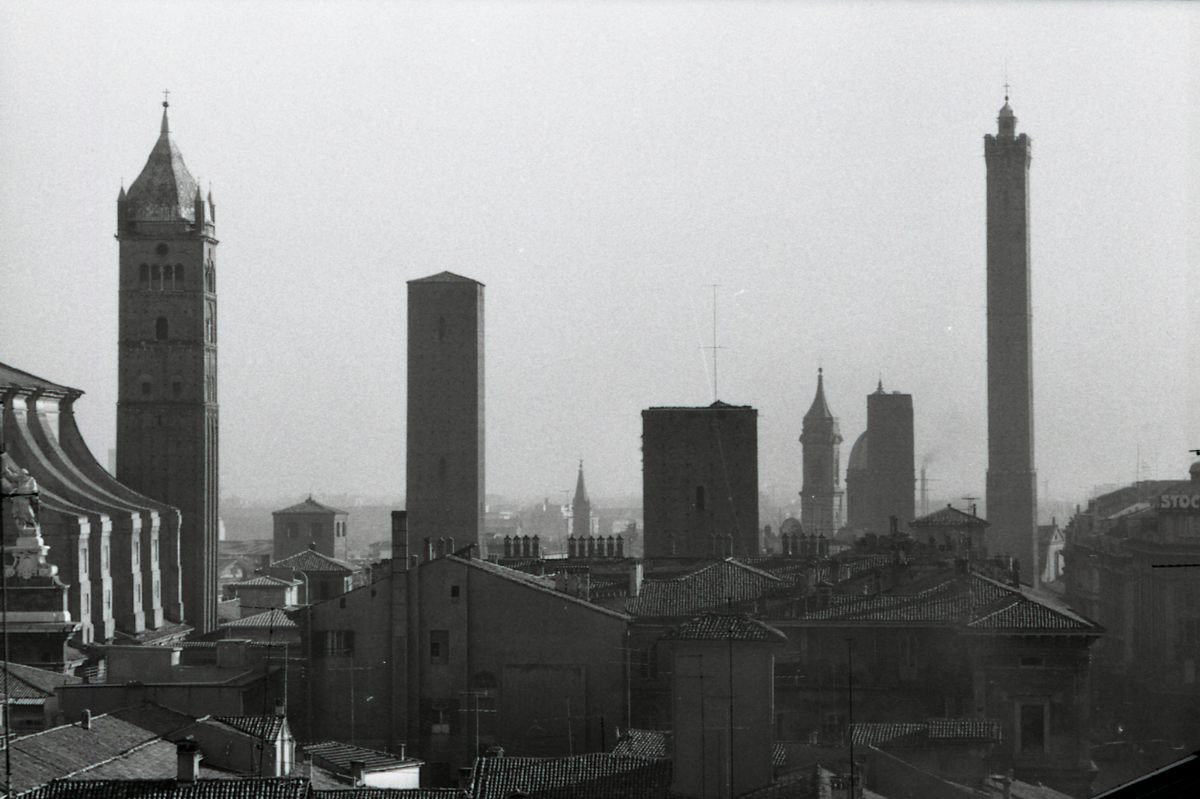800 years ago, the Italian city of Bologna was dotted with scrapers, earning it the nickname “Medieval Manhattan” from modern historians.
It was the most unique city in Europe, but today few memories remain of such greatness.
Short description
When did they start building skyscrapers?
Who built the towers
Why were towers needed?
What happened to the towers
How many buildings have survived
These are the main city attractions
When did they start building skyscrapers?

A model of Bologna, built by one of the historians more than 100 years ago.
Since 1000 Bologna has been a major city. It had a developed network of channels, which contributed to increased sales volumes. In 1088, the first European university, the University of Bologna, opened here.
At the same time, rapid construction and rapid expansion of the city began in Bologna. One of the main symbols of that era became a tall tower. The Asinelli tower, one of the ones that has survived to this day, began to be built in 1109.
From 1100 to 1300 the city was actively built up with towers. Mostly they were about 25 meters high, but some were more than 90 meters. Even 25 meters is a lot compared to ordinary houses of that time.
At one point, more than 180 towers were registered in Bologna. They created an unusual skyline that closely resembled modern Manhattan.
By 1300, 60 thousand people lived in Bologna. In terms of population, it ranked 5th in Europe, behind only Cordoba, Paris, Venice and Florence.
◦ Back to contents ◬
Who built the towers

Some towers served a military function, others were built for rich and noble families. The higher the tower, the richer its customer was, so the towers were called by the names of their owners.
The towers were also used as houses, prisons and warehouses. In addition, historians agree that they first acted as prisoners and warehouses, and then they began to live in them.
Tower houses were usually equipped with a well for drawing water, in the yard and garage, where both animals and carriages could be kept. The towers were almost always connected to each other with suspension bridges or underground passages.
The construction of the tower was very expensive and required the use of a large amount of labor (the right to the fortress was abolished in 1257). As a rule, a foundation of 5-10 meters was dug under the tower, and the construction of one building about 60 meters high took from 3 to 10 years.
◦ Back to contents ◬
Why were towers needed?

Along with the flourishing of trade, education and construction, there was a constant struggle for power in Bologna between the papacy and the Holy Roman Empire.
Bologna became a city of noble families from rival factions fighting for status and power. Often this struggle was carried out using violent methods.
Therefore, the families needed defensive structures, but lacking space to build castles, they built towers.
The wars in Bologna did not end until the late 1100s. After which the need for defensive towers disappeared.
◦ Back to contents ◬
What happened to the towers

Most of the towers have not survived to this day. They were destroyed for a variety of reasons.
Some buildings were destroyed during the battles between the papacy and the Holy Roman Empire. A considerable part of the tower collapsed under its own weight. Often they bent to one side and broke.

Probably some towers were destroyed as a result of earthquakes. Unstable structures only reinforced this. For example, the tilt of the Garisenda Tower is mentioned by Dante in chapter 31 of the Divine Comedy (the poem was written between 1308 and 1321)
Like Garisenda, if you stand under the overhang,
The summit seems to be falling little by little
Towards a cloud in the skyDante
Sometimes the towers acted as judges. For example, a person guilty of murder could have his house demolished and the rubble left for the time being to show his shame.
Some towers were created in order to build large palaces in their place, which became much more relevant by the Renaissance.
◦ Back to contents ◬
How many buildings have survived

Bologna Towers in 1965
To date, 21 towers have been preserved in Bologna. The best of them are the twin towers of Asinelli and Garisenda. There used to be a wooden bridge between them, but it was destroyed during a fire in 1398.
The Asinelli Tower was originally 70 meters high, later it was completed, resulting in a height of 97.2 meters.

The Garisenda Tower, on the contrary, had to be shortened from 60 to 48 meters because it sagged so much. Despite this, it still continued to tilt for several centuries.
In October 2023, the Bologna administration closed the tower due to severe tilting. A fence was erected around it in case of a possible collapse. But city authorities want to avoid this and restore the tower. Presumably, it will cost €20 million and will last for at least 10 years.
◦ Back to contents ◬
These are the main city attractions

The towers of Bologna are architectural monuments that have been amazingly preserved after 800 years.
Today these are tourist attractions and business cards of the city. Unfortunately, some of them may soon disappear due to the nature of their design.
Source: Iphones RU
I am a professional journalist and content creator with extensive experience writing for news websites. I currently work as an author at Gadget Onus, where I specialize in covering hot news topics. My written pieces have been published on some of the biggest media outlets around the world, including The Guardian and BBC News.










